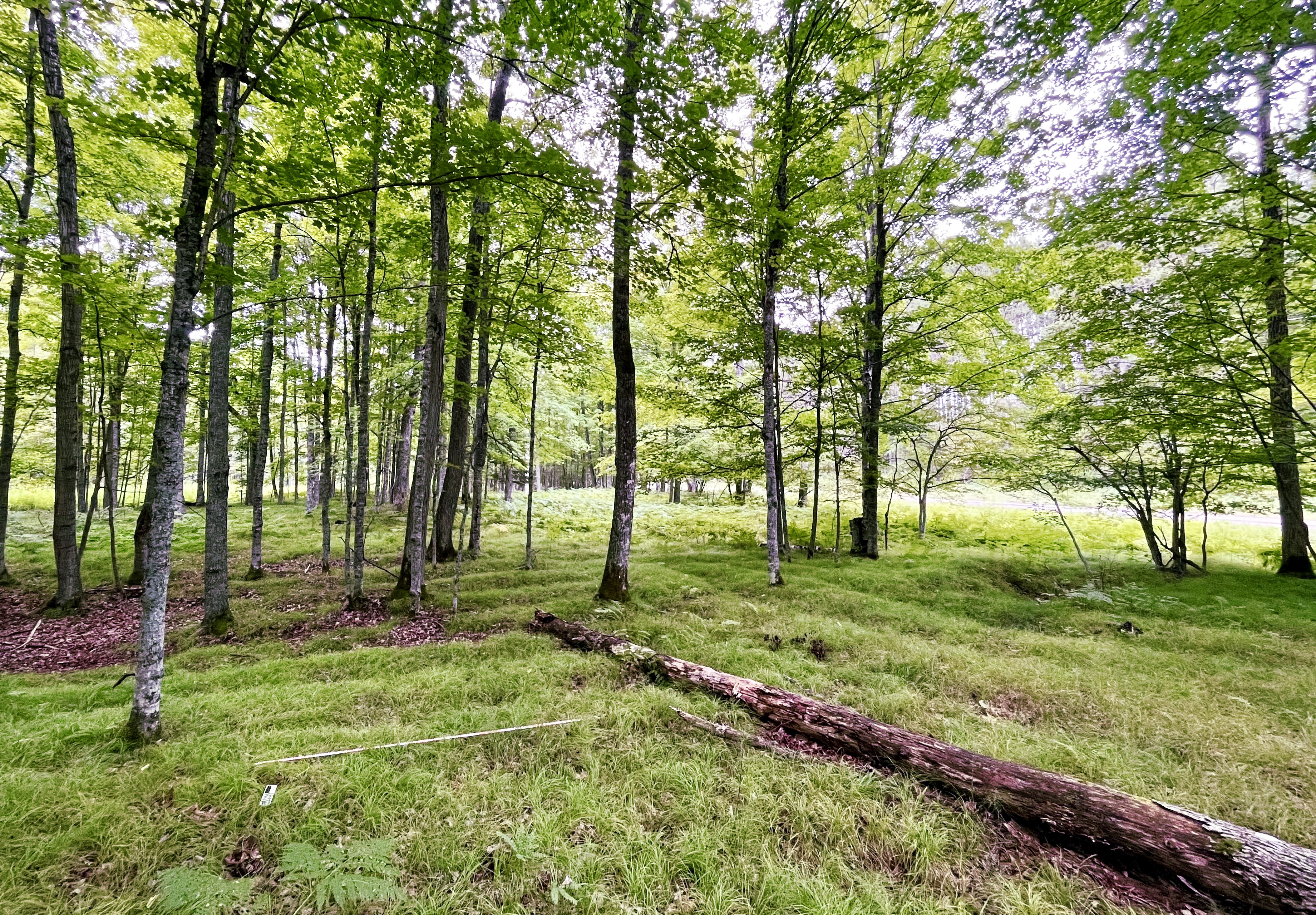Massive Fields Where Native American Farmers Grew Corn, Beans and Squash 1,000 Years Ago Discovered in Michigan
The ancestors of the Menominee Indian Tribe of Wisconsin built earthen mounds to grow crops. The site could be the largest preserved archaeological field system in the eastern United States
Sarah Kuta - Daily Correspondent
June 10, 2025

Green forest with subtle mounds visible under the grass
Ancestral Menominee farmers grew corn, beans and squash in earthen mounds they built on Michigan's Upper Peninsula. Madeleine McLeester
Hundreds of years before the arrival of the first Europeans, Indigenous farmers were growing crops like squash, corn and beans in earthen mounds they built on Michigan’s Upper Peninsula.
The mounds—created by the ancestors of the Menominee Indian Tribe of Wisconsin—likely represent the largest preserved archaeological field system in the eastern United States, according to a study published this month in the journal Science.
Archaeologists discovered the mounds in May 2023 during the brief window between winter and spring. The winter snow had melted, but the leaves had not yet appeared on the trees. They surveyed 330 acres using a drone equipped with a laser that mapped subtle features on the surface—a remote sensing technique known as lidar.
The team mapped an area that has cultural and historical importance to the Menominee. Located along the Menominee River on the Michigan-Wisconsin border, this region is known as Anaem Omot, or the “Dog’s Belly.”
The lidar uncovered a quilt-like pattern of parallel ridges that range from four to 12 inches tall. The mounds extend beyond the study area, suggesting the ancestral Menominee agricultural system was ten times larger than previously thought.
More:
https://www.smithsonianmag.com/smart-news/massive-field-where-native-american-farmers-grew-corn-beans-and-squash-1000-years-ago-discovered-in-michigan-180986758/
